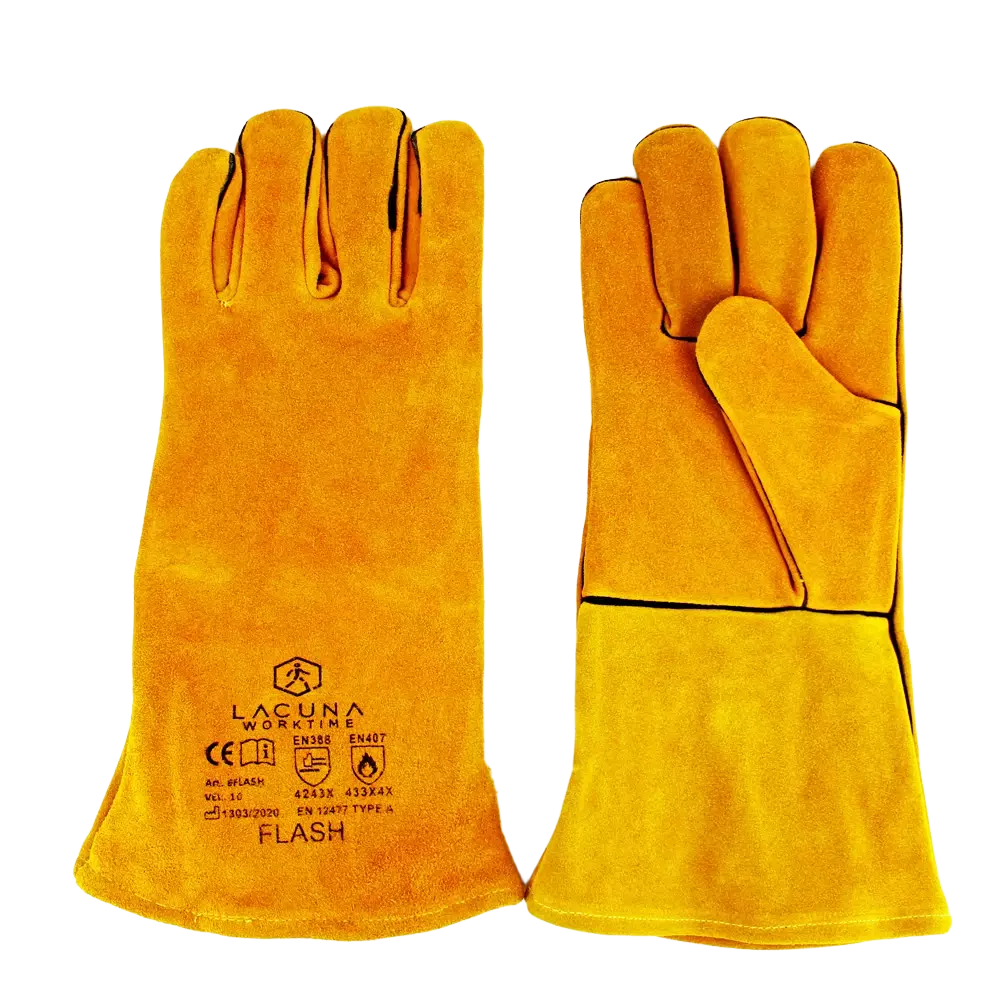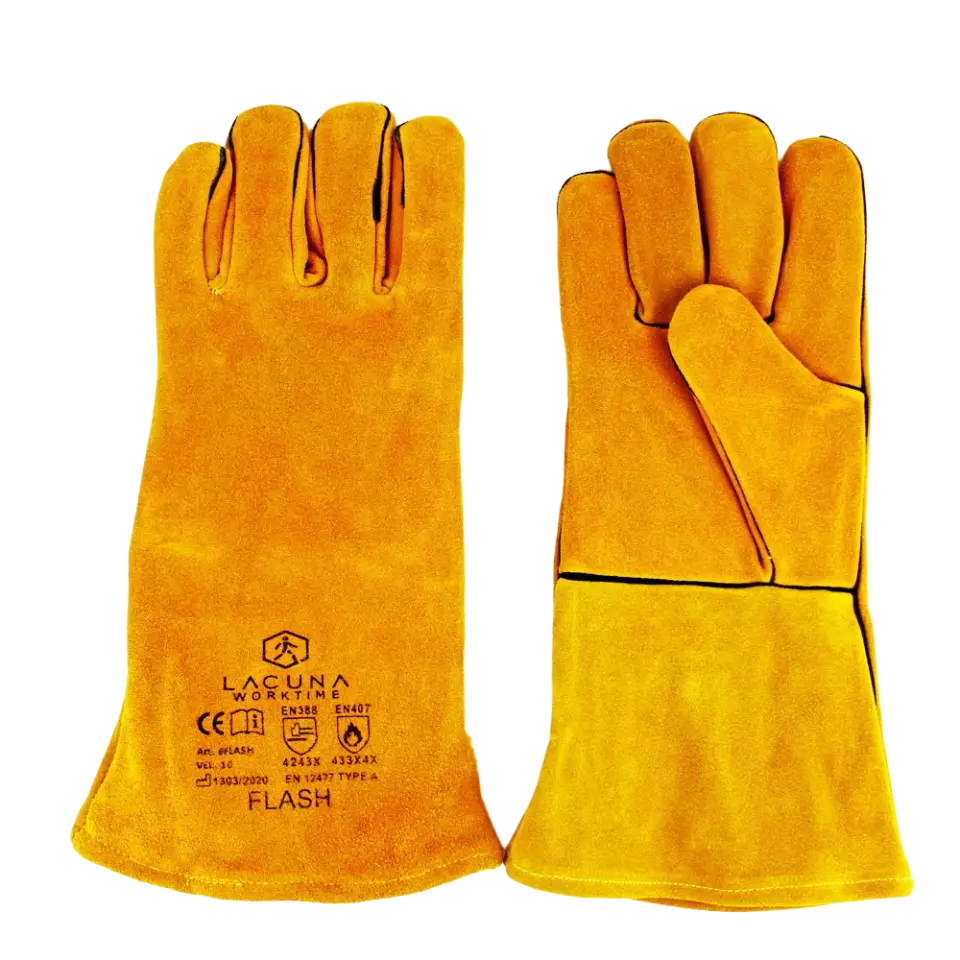
Features You'll Love

EN 407 · Radiant Heat Level X, Metal Splash Resistance Level 4, Molten Metal Resistance Level X, Burning Behaviour Level 4, Heat Convection Level 3
This product was not tested for protection against radiant heat, which is intense heat that can be felt from a distance. It does not claim to offer protection for tasks involving prolonged exposure to radiant heat sources.
Provides the highest level of protection against large splashes of molten metal, tested to resist amounts greater than 200 grams. This makes it essential for high-risk industrial jobs like foundry work and heavy welding.
This product has not been tested for resistance against splashes of molten metal. It provides no claimed protection and should not be used for welding, foundry work, or other tasks with molten metal risks.
Provides the highest level of protection against catching fire when exposed to a naked flame. After the flame is removed, the material will stop burning within 2 seconds and stop glowing within 5 seconds.
Provides a good level of protection by delaying the transfer of heat from a flame for at least 10 seconds. This makes it suitable for tasks where your hands might be briefly exposed to open flames.
Lacuna
FLASH Kevlar Welding glove size 10
FLASH Kevlar Welding glove size 10
4.5 / 5
16,85 €
Choose size
Shipping fee is 7,95 € for orders under 80,00 €
Features You'll Love

EN 407 · Radiant Heat Level X, Metal Splash Resistance Level 4, Molten Metal Resistance Level X, Burning Behaviour Level 4, Heat Convection Level 3
This product was not tested for protection against radiant heat, which is intense heat that can be felt from a distance. It does not claim to offer protection for tasks involving prolonged exposure to radiant heat sources.
Provides the highest level of protection against large splashes of molten metal, tested to resist amounts greater than 200 grams. This makes it essential for high-risk industrial jobs like foundry work and heavy welding.
This product has not been tested for resistance against splashes of molten metal. It provides no claimed protection and should not be used for welding, foundry work, or other tasks with molten metal risks.
Provides the highest level of protection against catching fire when exposed to a naked flame. After the flame is removed, the material will stop burning within 2 seconds and stop glowing within 5 seconds.
Provides a good level of protection by delaying the transfer of heat from a flame for at least 10 seconds. This makes it suitable for tasks where your hands might be briefly exposed to open flames.
Product description
Description: High Quality Fire resistant welding glove made of cow leather, sew with kevlar string
Material: Cow lether
Cuff: 15 cm, cow split leather
Sewing yarn: Kevlar fiber
Standards: EN 420, EN 388 3243X, EN 407 413X4X, EN 12477 Type A
Size: 10
Packaging: 1 pairs
Alternative product: A2043, A2043WT, KIRK
Contact heat 100°C
Barcode: 3856024207867
Unite of measure: pair
Packaging/minimum order quantity: 1
Full box quantity: 72